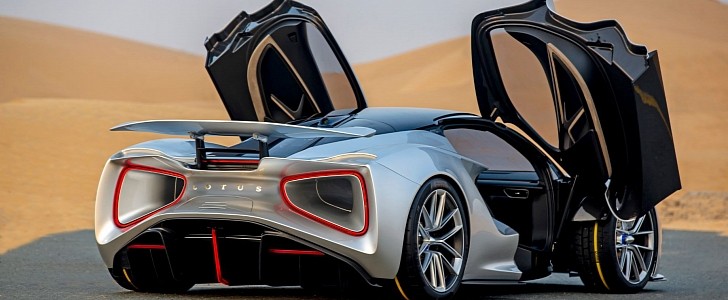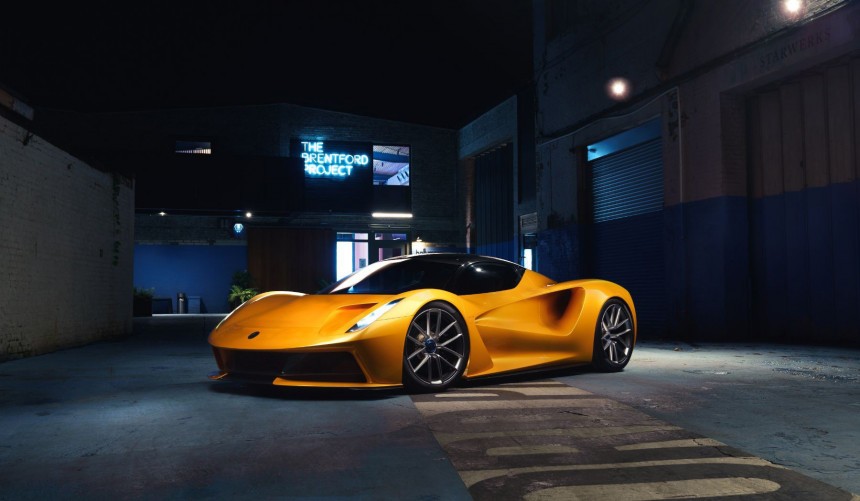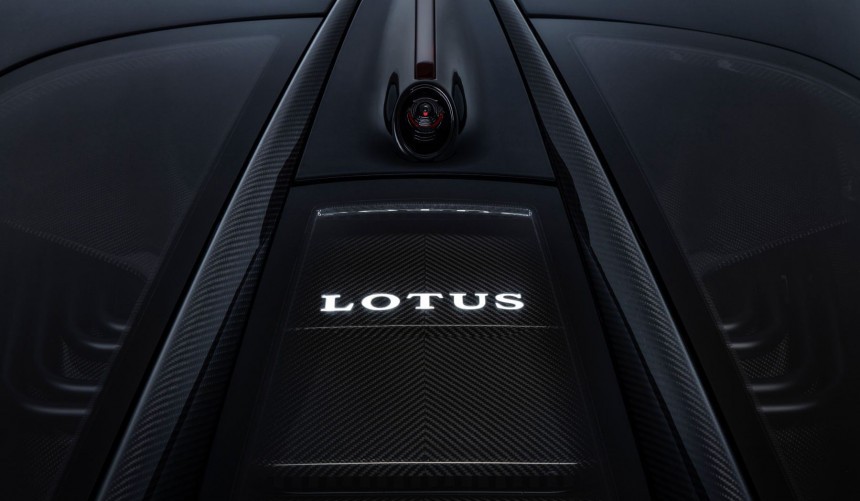The legendary British carmaker has been going through hard times in the past but it's coming back with a bang, bringing us a beautifully designed all-electric hypercar that promises to be the most powerful production road car ever built.
Lotus made a name for itself in motorsport, but its road cars have more of a cult following than wide-spread appeal. The current lineup consists of the Elise, Exige, and Evora, models that have been launched a decade ago and feature Toyota-sourced internal combustion engines.
New models were announced and subsequently canceled as the brand struggled to regain its identity, but since being taken over by Chinese multinational Geely in 2017, things started to settle, and two years later the Lotus Evija was introduced.
The manufacturer’s first production EV is a record-breaking monster powered by no less than four independently controlled electric motors mounted on each wheel that can individually produce 493 hp (368 kW; 500 PS).
The powertrain's combined output is 1,970 hp (1,470 kW; 2,000 PS) and a whopping 1,700 Nm (1,254 lb-ft) of torque, making the Evija the most powerful production car ever manufactured.
Four compact, lightweight 100-mm single-speed planetary gearboxes transfer power to each driveshaft and, along with the motors and silicon carbide inverters, are bundled into single cylindrical Electrical Drive Units (EDU).
The powerful motors provide torque vectoring, which translates into increased agility and stability on the road. The fully automatic system can instantly distribute power to two, three, or all four wheels, depending on the situation.
Feeding electricity to the four EDUs is an innovative 2,000 kW lithium-ion battery pack supplied, along with its management system, by Williams Advanced Engineering (WAE). This is the same group that provides the battery technology used in Formula E.
Unlike the vast majority of EV’s, the Evija’s pack is not integrated into the chassis, being placed in a central position, behind the driver, like a conventional mid-engine; also similarly, its cover is visible through the glass rear screen.
This placement delivers remarkable advantages in terms of aerodynamics and weight distribution while also offering easy access to the battery pack. This facilitates servicing, maintenance, or the ability to swap the entire unit with more capable packs that will be developed in the near future.
The battery offers 345 km (215 miles) of range, which is nothing spectacular, but Lotus states it is the fastest charging battery in current production, being developed to accept an 800kW charge. Unfortunately, such charging units are not yet commercially available.
In terms of speed, Lotus claims that the hypercar can accelerate from 0 to 100 kph (62 mph) in under 3 seconds and from 0 to 299 kph (186 mph) in under 9 seconds. It can achieve a top speed of over 320 kph (200 mph), which we presume is electronically limited.
The Evija continues the carmaker’s obsession with the letter ‘E’ (Elise, Exige, Evora) and gets its name from a variation of ‘Eve,’ meaning ‘the first in existence’ or ‘the living one.’
Production of the hand-built hypercar is set to begin in the first part of 2021 in Hethel, England, being limited to 130 units that will each cost about $2.1 million.
New models were announced and subsequently canceled as the brand struggled to regain its identity, but since being taken over by Chinese multinational Geely in 2017, things started to settle, and two years later the Lotus Evija was introduced.
The manufacturer’s first production EV is a record-breaking monster powered by no less than four independently controlled electric motors mounted on each wheel that can individually produce 493 hp (368 kW; 500 PS).
Four compact, lightweight 100-mm single-speed planetary gearboxes transfer power to each driveshaft and, along with the motors and silicon carbide inverters, are bundled into single cylindrical Electrical Drive Units (EDU).
The powerful motors provide torque vectoring, which translates into increased agility and stability on the road. The fully automatic system can instantly distribute power to two, three, or all four wheels, depending on the situation.
Feeding electricity to the four EDUs is an innovative 2,000 kW lithium-ion battery pack supplied, along with its management system, by Williams Advanced Engineering (WAE). This is the same group that provides the battery technology used in Formula E.
Unlike the vast majority of EV’s, the Evija’s pack is not integrated into the chassis, being placed in a central position, behind the driver, like a conventional mid-engine; also similarly, its cover is visible through the glass rear screen.
The battery offers 345 km (215 miles) of range, which is nothing spectacular, but Lotus states it is the fastest charging battery in current production, being developed to accept an 800kW charge. Unfortunately, such charging units are not yet commercially available.
In terms of speed, Lotus claims that the hypercar can accelerate from 0 to 100 kph (62 mph) in under 3 seconds and from 0 to 299 kph (186 mph) in under 9 seconds. It can achieve a top speed of over 320 kph (200 mph), which we presume is electronically limited.
The Evija continues the carmaker’s obsession with the letter ‘E’ (Elise, Exige, Evora) and gets its name from a variation of ‘Eve,’ meaning ‘the first in existence’ or ‘the living one.’
Production of the hand-built hypercar is set to begin in the first part of 2021 in Hethel, England, being limited to 130 units that will each cost about $2.1 million.












